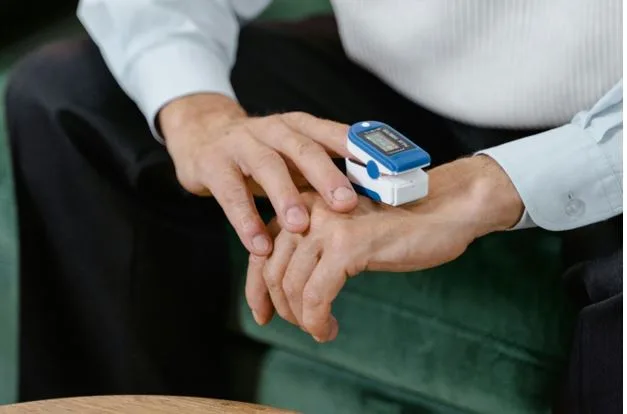How Digital Tools Are Transforming Patient Monitoring
Let’s be honest—waiting rooms, phone tag, and uncertainty shouldn’t be part of the healthcare experience anymore. Thankfully, technology is stepping in to improve how health is tracked and managed outside the clinic. With digital tools, care is no longer limited to scheduled appointments. Providers can now receive real-time updates, monitor trends, and respond faster when something changes. Smart alerts, remote monitoring, and easy communication are making care more proactive and less reactive.
This article will explore how digital solutions are transforming health tracking into something more connected, efficient, and personalized, for both care teams and the people they support.
Real-Time Health Tracking from Anywhere
Health tracking doesn’t need to be complicated. With today’s tech, simple devices like smartwatches or wireless monitors can collect vital data throughout the day. Things like blood pressure, glucose levels, or heart rate can be tracked continuously, without needing a visit to the clinic. The real benefit? Providers can check on people remotely, catching warning signs early. This kind of always-on connection gives peace of mind while reducing the need for constant in-person checkups. It’s convenient, efficient, and easy to use for both sides.
Smarter Remote Care
People don’t always remember to log their symptoms or stick to care plans. That’s where automated systems come in. By collecting data in real time, care teams can spot trends, send reminders, or check in before a problem gets worse. Tools like RPM software help healthcare providers gather data from remote devices, manage alerts, and keep everything organized in one dashboard. It also supports billing and compliance, making it easier for clinics to provide consistent care without extra paperwork.
Automated Alerts for Early Intervention
Fast action often makes a big difference. With digital monitoring systems, unusual readings don’t go unnoticed. Automated alerts can instantly flag high blood sugar, low oxygen levels, or irregular heartbeats, so someone on the care team can step in quickly. These alerts don’t just keep people safer—they help reduce ER visits and hospital stays. It’s like having a watchful assistant who never takes a break. And since alerts are customizable, providers can adjust them to suit each person’s needs.
Centralized Dashboards for Easy Oversight
Managing information from multiple people can be tricky. Centralized dashboards solve that problem. Instead of juggling charts or spreadsheets, care teams can log in and view all the important data in one place. These dashboards make it easy to spot who needs attention first. They also show trends over time, making decisions more data-driven. With everything organized neatly, time isn’t wasted digging through files or chasing down updates—it’s all right there.
Better Communication with Care Teams
Staying in touch shouldn’t be difficult. Many platforms now include built-in messaging, video calls, or daily check-ins. This makes it easier for people to ask questions or report changes without scheduling a full appointment. The result? Fewer missed updates, better understanding, and a stronger connection between care providers and those they support. It’s one of the easiest ways to build trust and stay on track with any treatment plan.
Better Support for Chronic Condition Management
Keeping up with long-term health needs can be overwhelming, especially for those managing conditions like diabetes, hypertension, or COPD. Digital tools ease that burden by offering steady, simple tracking over time. No need to rely on memory or occasional visits—data is always flowing in. These updates help care teams adjust treatment plans faster. When small issues are caught early, bigger health problems are often avoided. This kind of ongoing oversight leads to better results and lowers the chances of emergency room visits or hospital stays.
Simplified Compliance and Reimbursement
Healthcare providers often spend as much time on paperwork as they do on care. That’s where digital platforms can help. They track everything automatically—from time spent reviewing data to check-ins and alerts. Solutions that support billing and documentation take pressure off care teams. For example, platforms aligning with Medicare’s remote monitoring codes help ensure clinics follow the rules while still focusing on what matters: helping people. Automation makes the process faster, clearer, and less stressful.
Engaged and Informed Individuals
When people understand what’s going on with their health, they tend to make better decisions. Apps and portals that show progress, explain readings, or send reminders can make a big difference in daily habits. Instead of passively waiting for instructions, people become more active in their care. They learn what certain numbers mean, track their own improvements, and stay motivated to stick to their plans. These tools create a sense of ownership and confidence that can last long after the technology is turned off.
Scalable Care for Growing Needs
As clinics see more people with chronic conditions, they need ways to provide care without adding stress to their teams. Digital tools help scale care. One nurse or doctor can monitor several people at once, thanks to dashboards, alerts, and automation. This makes it easier for smaller practices to handle more cases, and for larger systems to offer more personalized care. With fewer in-person visits needed and more remote tracking in place, resources stretch farther while still delivering quality support.
Smarter Decisions with Long-Term Data
Short-term snapshots don’t always tell the whole story. However, trends become clear when data is tracked over weeks or months. Digital tools safely collect and store this information, giving care teams the big picture. These insights help adjust medications, fine-tune treatment plans, and even predict problems before they happen. The result is care that’s tailored, timely, and based on real-life patterns—not guesswork. It’s a better way to deliver health support that fits each person’s life.
Technology is changing more than just how care is delivered—it’s changing when, where, and how quickly care teams can act. With modern tools, health professionals stay informed, proactive, and more connected to the people they support. From daily tracking to long-term insights, these digital solutions are making care easier, smarter, and more personalized. It’s not just about collecting numbers—it’s about improving lives, one update at a time.



